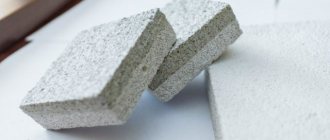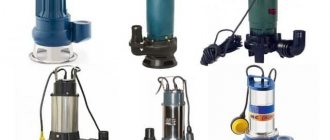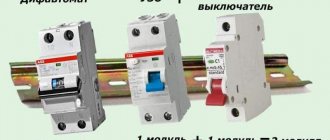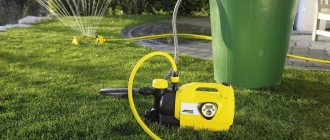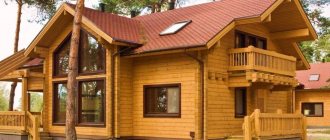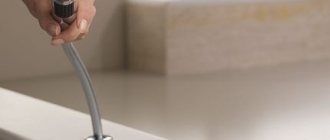An important step in almost any construction is thermal insulation. This is especially true for residential buildings. In the modern world, there are a lot of different materials for home insulation on the construction market. They all have different properties and characteristics and have their pros and cons. But today we will talk about a relatively new technology for insulating houses. The topic of our review today is liquid insulation , its types, characteristics, advantages and disadvantages. We will tell you everything you need to know about liquid insulation for your home, and also help you choose the best one.
So, what is liquid insulation? Let's start by conditionally dividing all liquid thermal insulation materials into two main, fundamentally different types. The first type is warm paints , and the second is foamy substances. How these types differ, in what cases it is better to use them and which brands are better to use, we will talk about all this further. To make it easier for you to navigate, we note that foam mixtures include: penoizol, polyurethane foam, polystyrene foam and other similar materials, which are often called liquid foam. But thermal paints have a more accessible application from the point of view of everyday issues, and in many external features they are similar to facade mixtures. Let us remind you that we examined most types of solid insulation in the last article, solving the question of which insulation is better, so we recommend that you familiarize yourself with this material.
In this article, we will look at examples of specific brands of liquid insulation that a group of experts have identified so that you can choose the best liquid insulation for your needs. If you know any other brands or options for insulating houses, be sure to share your opinion in the comments.
Liquid insulation
What is liquid wall insulation?
In addition to the fact that liquid insulation allows you to apply insulation in a fairly simple way, even after hardening this insulation is a durable monolithic, porous layer. And it performs the role of thermal insulation . Thanks to its structure, which has many air-filled microspheres, the insulation performs its functions many times better than its analogues. It is believed that just a few millimeters of liquid insulation have the same effect as a 5-7 centimeter layer of conventional insulation, for example, mineral wool, glass wool or polystyrene foam.
On the modern building materials market, various types of liquid insulation are sold, which are better suited for different purposes. The difference between these insulation materials is that they are produced from different raw materials, and the technology for applying the insulation also differs. Here are the varieties:
- Ceramic compositions.
- Expanded polystyrene or penoizol.
- Sprayed ecowool.
Of course, as with any choice of materials, for example, brick, we must understand that each brick is suitable for its own purposes, for example, clinker brick is used for the facade of a house, white sand-lime brick is good for its frost resistance, and fireclay brick is needed when building a fireplace or stove. Liquid insulation is no exception, so each type of insulation has its own pros and cons, and their scope of application also differs.
Where is liquid insulation used?
The scope of application of liquid insulation is quite diverse. This material is used for not only various construction tasks. Often such compounds are used in automotive production to protect metal from corrosion. Liquid insulation is also used for various products that must work by maintaining heat within certain values.
Where is liquid insulation used?
But still, the main area of application of such compositions is construction, namely the insulation of the following parts of the house.
- Stan.
- Paula.
- Floors.
- Ceilings and roof coverings.
- Pipe
In other words, liquid insulation is considered more versatile than any other insulation that we talked about in the last article. This versatility is associated with the method of applying the insulation; it is this that allows the use of liquid insulation where it is simply not possible to use any other.
The main pros and cons of liquid insulation
Liquid insulation has many fans among professional builders. This is due to the fact that such insulation has several undeniable advantages, namely:
- Universal use on surfaces of any configuration.
- Very low thermal conductivity due to the porous structure, which is very important for thermal insulation. The basic properties of any insulation can be found in this article.
- The material has high resistance to external physical influences.
- The material has good fire resistance.
But unfortunately, like any material and technology, liquid insulation also has disadvantages that can complicate some work and not perform the necessary functions. The main disadvantage of liquid insulation is precisely its method of application.
This is due to the fact that some liquid insulation requires special equipment. This creates the need to contact specialists. This means that it is not always possible to do the work yourself. This means that another expense item will appear. But construction is already a costly business, so some consumers choose more traditional insulation, even despite all the obvious advantages of liquid insulation.
Video description
The video tells more about the Corundum thermal paint:
The coating is formed thin with a porous structure. Technically, the dry residue has high strength and ductility, which explains its resistance to cracking.
More often the material is used for thermal insulation of cold water pipelines. The protective layer prevents the formation of condensation and corrosion on metal lines.
Akterm and Astratek
The Akterm series is represented by 15 positions. 7 of them have thermal insulation properties. The table provides a brief description of the samples.
Application of Akterm thermal paint Source akterm.ru
| Standard | used as a waterproofing agent in the residential and industrial sectors. |
| Volcano | exhibits resistance to heating up to +500 degrees Celsius; applied to metal, penoizol, mineral base (concrete, brick, cinder block). |
| North | The paint is made on an organic basis; operating temperature from -35 degrees Celsius; has high adhesion to most substrates; shows inertness to aggressive environments; resistant to corrosion. |
| Facade | resistant to natural phenomena; used for external insulation of mineral bases. |
| Anti-condensation | base – aqueous dispersion; prevents the formation of condensation; Contains antifungal additives. |
| Metal | withstands heating up to +190 degrees Celsius; protects metal from corrosion; prevents freezing and condensation. |
| Concrete | used for interior work; suitable for painting concrete; contains antifungal additives; the coating is suitable for decorative painting and wallpapering; a 1 mm layer does not allow heat and cold to pass through. |
TOP best types and manufacturers of liquid insulation
A group of our experts has prepared a list of the most common and high-quality liquid insulation materials. They tried to display as efficiently as possible all the pros and cons of these liquid insulation materials. After you get acquainted with each insulation in more detail, you can make a final decision whether it is worth using it to insulate your home and, if so, which one.
Liquid foam
It is believed that one of the most common options for liquid insulation can be called liquid (filled) foam . Its structure is a fine-mesh material, and most importantly, it has no odor. Therefore, most builders prefer to use it for internal insulation of the house. But nothing will stop you from using liquid foam outside the house.
Liquid foam. Roof insulation
Liquid foam is very often used in the construction of high-rise buildings. It owes such popularity not only to its thermal insulation properties, but also to its high elasticity. In addition, builders like that this material can be made directly on the construction site and poured under high pressure into hollow profiles. When dry, such liquid insulation guarantees a fairly good level of thermal insulation. Experts who work with this material praise its high strength, environmental friendliness, good thermal insulation properties, and most importantly, that it can be poured into any, even hard-to-reach places.
In addition, liquid foam is a durable material and lasts quite a long time. This is due to the fact that this material is resistant not only to mechanical stress, but is also not afraid of mold and mildew, since it has a porous structure and allows the walls of the house to breathe. In addition to everything, liquid foam can easily withstand any temperature conditions. The complex of these properties makes this material so popular and ensures its service life of more than 65 years .
Liquid foam
Most often, wall insulation using liquid foam is done using penoizol or polyurethane foam . Both of these options have the properties and characteristics of liquid foam. But it is not possible to apply penoizol to finished walls. It is used at the stage of wall construction, covering them with material. And also to use penoizol you need quite heavy equipment.
There are 2 types of polyurethane foam , the first with open cells, the second with closed cells. The first type has less reliable waterproofing, but has much better sound insulation. It is possible to apply polyurethane foam vertically using the same equipment as for liquid foam. And if you purchased the material in cylinders, then you only need a mounting gun
Liquid foam
Liquid insulation "Polinor"
A type of polyurethane insulation is liquid insulation "Polinor" . This insulation is produced in very convenient and small-sized cylinders. one such cylinder will be able to cover one square meter of surface, given that the thickness of this layer will be 6 centimeters. In construction stores you can find “Polinor”, the price of which fluctuates around 500 rubles , depending on the modification. Therefore, this type of insulation is considered very affordable, and most importantly, easy to use. Typically, "Polinor" is used to insulate the following surfaces.
- Facades, internal walls made of various building materials, for example, concrete, brick, gas silicate blocks.
- Lag floors or any other coverings with a non-load-bearing structure.
- Various types of attics and attics.
- Pitched roof and its internal surfaces.
- Foundation, basement and ground floor.
Liquid insulation Polinor
Due to the fact that this insulation is in liquid form and can be used on almost any surface, it is often used for thermal insulation of pipes outside the home. But there is also a drawback to this packaging option. Due to insufficient pressure, such insulation is not suitable for insulating empty spaces. Therefore, when using it, you must remember that it should be applied only by spraying . There are many videos on how to properly use such a cylinder. But in principle there is nothing complicated, and instructions are written on the cylinder itself.
Technical characteristics of liquid insulation "Polinor"
Let's take a closer look at the technical characteristics of the Polinor liquid insulation. This will help you understand whether this type of insulation is suitable for your needs.
- The thermal conductivity of this liquid insulation is in the range of 0.023 - 0.025 W/μ
- When the insulation hardens, its density will be at least 28 kg/m³.
- Closed cells in the structure of the material are at least 70%.
- If you immerse insulation in boiling water for 90 minutes, it will absorb only 2% moisture.
- The maximum permissible operating temperature is 121°C.
- The service life is approximately 45-50 years.
What does Polinor look like?
Among other things, Polinor is not only moisture-resistant, but it is also resistant to most chemicals. But you still need to know that there are substances that can adversely affect this liquid insulation. These chemicals include chloroform, methylene chloride, dichloroethane, and concentrated solutions of hydrochloric acid. Due to exposure to these chemicals, Polinor swells. You also need to remember that contact with sulfuric and nitric acids is extremely undesirable, due to the fact that they can corrode polyurethane.
Liquid insulation "Corundum"
What is liquid insulation “Corundum” , what is its feature and why was it in our TOP? We will now answer all these questions. Firstly, Corundum insulation is a mixture that includes an acrylic binder and ceramic microspheres with a diameter of 0.01 to 0.5 millimeters. Inside these spheres there is rarefied air. And the binding acrylic component of the mixture is made using catalysts and fixatives.
Application of heat-insulating paint “Corundum”
Secondly, liquid insulation “Corundum” is used not only for insulating residential buildings; this amazing material is very often used to protect industrial equipment and pipelines. Externally, ceramic heat insulator resembles ordinary paint and looks like a white suspension. After applying such a solution to the surface, it dries to create a very reliable and elastic polymer coating.
Thirdly, this material not only creates thermal insulation for the surface, like any other insulation, but also protects the metal from corrosion . And this is a very significant addition to the already very good properties. Due to the versatility of application, several different versions of heat-insulating paint “Korund” are produced. Let's look at each in detail.
Types of heat-insulating paint "Corundum"
Types of heat-insulating paint "Corundum"
- "Corundum Classic" . A universal material with high efficiency. Used for insulation of any surfaces. Treatment with such paint will prevent condensation from appearing and greatly reduces heat loss. The price of such a paint modification is approximately 375 rubles/liter.
- "Corund Anticor" . An indispensable modification for those who need to work with rusty metal. This composition can be applied to rust; it is only important to remove the loose layer of rust itself. The composition of such heat-insulating paint has very powerful anti-corrosion properties. The most important thing is that it not only preserves traces of corrosion, but prevents its occurrence. In addition to these important functions, this modification also has excellent thermal insulation properties. The average price of such paint is 435 rubles/liter.
- "Corundum Winter" . If you need to apply paint in harsh conditions, then this modification is a must-have. This material can be worked at a temperature of -10°C; for comparison, for conventional compositions the value is +5°C. The thing is that the modification of this material does not freeze and does not polymerize at subzero temperatures. It's all about the composition of such paint; it contains acrylic polymers, dispersed foam glass microgranules, flame retardants, inhibitors, pigments and rheological components. This paint will cost you 540 rubles/liter.
- "Corundum Facade" . And this modification was specially developed for application on concrete surfaces. Its feature is increased heat-reflecting properties. Experts also point to the high vapor permeability of such material and resistance to atmospheric influences. There will be no particular difficulties when working with this paint, since it can be applied in thick layers. After completion of the work, such paint does not interfere with the use of decorative facade coatings. The best option for home. Such heat-insulating paint will cost 400 rubles/liter.
Liquid insulation "Armor"
Here is another liquid insulation called “Armor” . The name is very symbolic. It is a homogeneous white suspension. After this composition dries, it forms a dense matte film that protects the surface from most external influences. Thermal insulation properties are created by retaining heat inside ceramic microgranules. And the acrylic base gives the composition elastic properties. Other necessary properties that are needed for such heat-insulating paint are achieved by adding catalysts, as well as antiseptic and anti-corrosion additives.
Popular types of thermal insulation paint “Armor”
There are various modifications of thermal insulation paint. They also differ from each other in various properties that are inherent in each type, and in the final price.
- The most common "Classic"
- "Antikor"
- "Winter"
- "Facade"
- "Wall"
- "Light"
So that you can compare the heat-insulating paint “Armor” with other analogues and make a choice based on your specific tasks, let’s take a detailed look at the main technical characteristics of this paint.
- Thermal conductivity value: 0.0012 W/μ.
- Vapor permeability indicators: from 0.001 to 0.013 mg/m·h·Pa.
- Density when the paint dries: 0.558 g/cm3.
- When applying a layer 1 mm thick, per 1 m2 you will need 1 liter.
- The paint dries from 2 to 26 hours.
- The temperature at which the paint can be used (maximum value) is +200°C (+140°C for inexpensive options).
- The service life of such paint is about 14-17 years.
Application of heat-insulating paint “Armor facade”
Thermal insulating paint "Armor" has a practically unlimited scope of application. It can be used for any vertical, inclined and horizontal surfaces, and can also be used both outside and inside buildings. Experts recommend using this paint for insulating roof slopes, ventilation, facades, various tanks, floors, refrigerators, water heaters, as well as any other similar surfaces and objects.
Work technology
Sprayed insulation and thermal paint are applied to a clean, durable base without corrosion or areas of biological damage. Painting is carried out in the same way as with traditional compositions: priming, forming a layer-by-layer coating with intermediate drying of each. The manufacturer writes on the packaging about the intricacies of the work.
Insulation of walls using insulating foam occurs in the following order:
- installation of sheathing made of lumber, metal or plastic profiles;
- spraying a heat insulator onto the working surface across the entire width of the opening in the direction from bottom to top (it may be possible to repeat the procedure to increase the thickness of the coating);
- protection and decorative finishing of the formed layer.
The sheathing serves as a reinforcing material and a guide to the thickness of the insulation. After the foam has dried, the excess foam composition is cut off along the sheathing. This results in a smooth surface, which is easier to work with later at the finishing stage.
Foam insulation Source ytimg.com
Thermal insulation properties of liquid and traditional insulation materials
If you have not read the material on the question of which insulation is better, then let us very briefly look at the thermal conductivity coefficients of the main and most common thermal insulation materials.
- Mineral wool : 0.06 – 0.07 W/(m*K). The difference in values is very dependent on density.
- Sheet foam : 0.037 – 0.05 W/(m*K). Also, when using sheet foam, there will be heat loss at the joints.
- Penoizol : 0.06 W/(m*K).
- Expanded polystyrene : – 0.03 W/(m*K).
- Polinor : 0.025 W/(m*K);
- Thermal insulation paints : from 0.0012 to 0.025 W/(m*K). Of course the manufacturer and modification matter.
You also need to understand the fact that during the actual operation of the material, its thermal conductivity will differ for the worse due to a number of different reasons.
Comparison of thermal conductivity of various materials
Pros and cons of liquid insulation
Liquid insulation - advantages
- Can be applied to surfaces of almost any shape and material.
- Liquid insulation is resistant to atmospheric influences.
- Quite a small price for installation work.
- Due to the fact that the insulation is initially liquid, when it dries, it forms a monolithic layer without joints, compared to sheet insulation.
- There are no problems with coordinating home insulation with regulatory agencies. After applying the paint, the appearance of the house remains the same.
- It is not necessary to thoroughly prepare the surface for applying insulation. The solutions have high adhesive properties.
Liquid insulation - cons
- If stored and transported incorrectly, problems may arise with the composition and its properties.
- Compared to traditional insulation, it has a relatively short service life.
- It can be quite expensive if you use some liquid insulation materials.
- Many mixtures require specialized application equipment.
Insulation of liquid thermal insulation from the inside - detailed installation diagram step by step
- Work must begin with the stage of leveling the walls . The brick wall must first be treated with plaster and then primed. Each subsequent ball of paint must be applied after the previous one has dried. At the final stage, the walls are plastered .
- Liquid thermal insulation is applied to regular paint, so anyone can do the job. For a high-quality coating, it is worth applying more than one layer of coating. After the latter has dried, you can proceed to finishing the walls.
- Use a roller, brush or sprayer to apply the coating.
- For work, arm yourself with a brush made of unnatural bristles, which are used for applying interior and façade paint to paint a small surface. Before applying the necessary thermal insulation material, the walls are wetted with water.
CAREFULLY!
To obtain the necessary insulating layer, it is important to direct movements only in one direction.
When applying heat-insulating material to plaster, it is recommended to use staple; the layer thickness should not exceed 1.0 mm.
Applying thermal insulation using a spray gun
Applying liquid insulation using a spatula
How to choose the right liquid insulation?
After you have finally decided what exactly you need to insulate, and there are a lot of nuances, if it is insulating a house, then first you need to decide which side you will do it from, and only after that select the material. For example, most manufacturers produce special “Facade” paints for insulating the facades of houses. Therefore, if you already clearly know what exactly needs to be insulated, the choice becomes simpler.
What about the paint itself and how not to make a mistake and choose a damaged one? We have already said that if stored improperly, the properties of liquid insulation can deteriorate, so when purchasing liquid insulation, first of all you need to pay attention to the production date and clarify the storage conditions. As with any product, it is still better to prefer well-known brands . They have already proven the quality of their products in the market.
How to choose thermal insulation paint
Here are the points that experts recommend paying attention to when purchasing:
- Find out the weight of a bucket of paint . The density of the composition greatly affects the thermal insulation properties; the higher the density, the lower the thermal insulation properties. Therefore, after weighing a ten-liter bucket of paint and seeing a weight of more than 6.5 kg, it is better to refuse to purchase such a composition.
- Hold the paint up to light . In the composition, light microspheres should rise to the top. Therefore, a thicker top layer of insulation indicates higher thermal insulation properties of the composition.
- a small amount of paint between your fingers . If the material is of good quality, then you will feel a fairly high amount of rough microgranules. If you don’t feel this effect, then most likely the paint is of low quality.
- The paint must be white . If the color is changed, this indicates gross violations in the manufacturing process. But there are paints with mineral color additives and this point does not apply to them.
When choosing and purchasing heat-insulating paint, experts do not recommend relying only on price. It is necessary to choose a paint that will perform its tasks, but the price is still of secondary importance.
Selection rules
First of all, you should decide on the place where the thermal paint will be applied. Usually, the jar with the product is labeled by the manufacturer. Look carefully at what surface this product can be applied to.
Carefully inspect the contents of the jar. It should be uniform, there should be no plaque or any inclusions. It is desirable that the color be white, but light shades of gray or beige are allowed. Otherwise, the product will not meet the declared qualities.
The density of the product should not be ignored. A low indicator of this criterion will give greater heat transfer. In addition, you should familiarize yourself with the service life and interaction with external environmental indicators. For example, ultraviolet light, fire or water.
Not all liquid thermal insulation has an easy application method. Make sure that the product not only meets the required protection and density parameters, but is also convenient to use.
Since there are a large number of manufacturers of this insulation on the market, it is better to give preference to a time-tested brand. This way you can be sure of the quality and reliability of the purchased product.
How much does liquid insulation cost?
But the price of liquid insulation varies. Because everything depends on the material itself, the composition of this material, the method of installation (application), the area of application and, of course, on the manufacturer’s brand. Therefore, it is difficult to name any general price for liquid insulation and the price varies very significantly, if you look at it objectively. To be prepared, the cost of any liquid insulation must be obtained directly from the seller or manufacturer.
For example, in the famous construction store you can buy goods at the following prices.
- “Magniterm Standard”: 4100 rubles per 10 liters;
- "Polynor": 468 rubles per cylinder.
What are the features
There are several reasons why liquid wall insulation is gaining traction. Even classic thermal insulation is gradually fading into the background. We are talking about glass wool, mineral wool, etc.
Such classic insulation materials are good in many respects. But insulating the inside of an apartment or house with cotton wool is not the best option. On top you need armor in the form of plasterboard sheets. And such structures steal a lot of space.
Also, such materials can quickly dry out and crumble. As a result, holes are formed, due to which the thermal insulation loses its effectiveness.
Liquid insulators have several functions and properties:
- protection from moisture;
- ensuring proper heat exchange;
- mold resistance;
- protection against external corrosion of the house;
- preventing the formation of condensation at corners;
- In winter, saving on heating costs.
The liquid structure allows for quick and easy application. It is not difficult to treat hard-to-reach places.
Liquid-type insulation materials have many glass microscopic hollow spheres in their composition. This allows you to increase the thermal insulation properties. Literally 1 mm of thickness of the liquid substance is enough to replace 8 mm of polystyrene foam, glass wool, and mineral wool.


